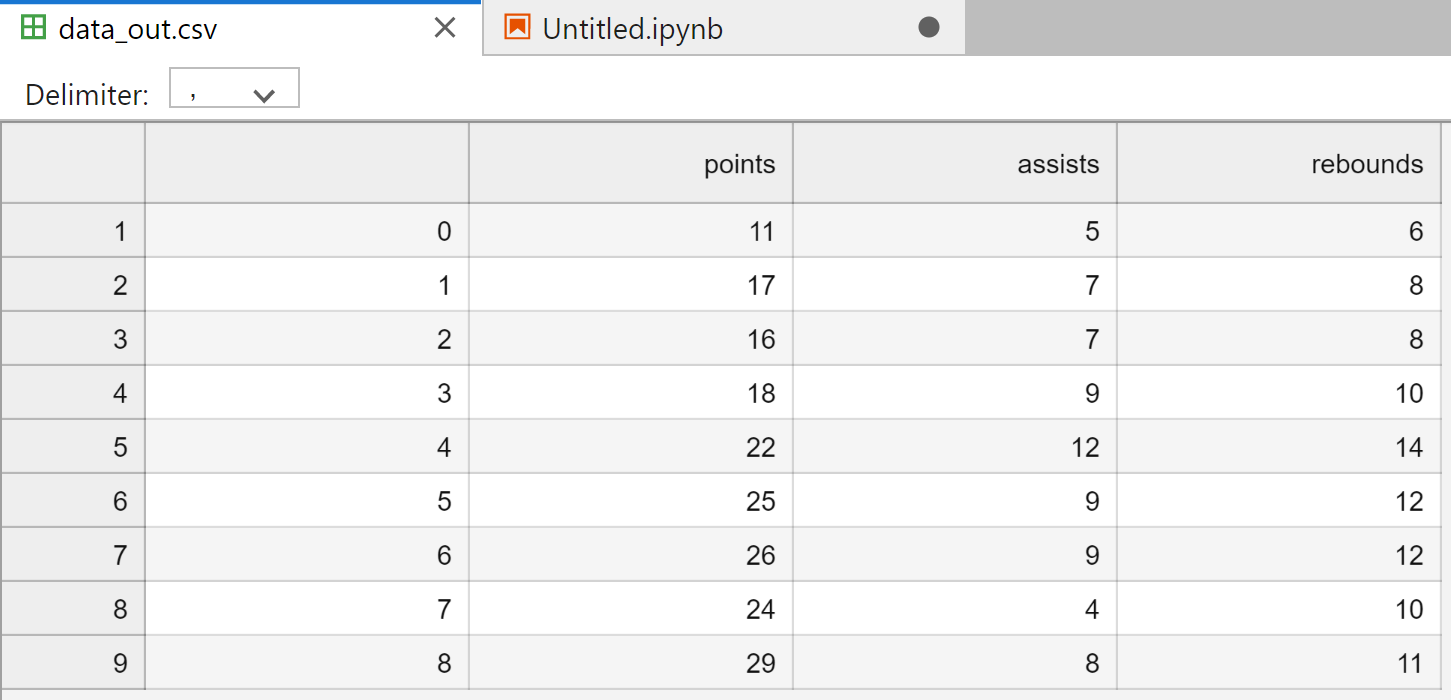如何在python中使用“with”打开文件(含示例)
您可以使用以下语法在 Python 中打开文件,对其执行某些操作,然后关闭该文件:
file = open (' my_data.csv ') df = file. read () print (df) file. close ()
这种方法的问题是很容易忘记关闭文件。
更好的方法是与 open 一起使用,它使用以下基本语法:
with open (' my_data.csv ') as file: df = file. read () print (df)
使用这种方法,您正在使用的文件会自动关闭,因此您不必记住使用file.close() 。
以下示例展示了如何在不同场景下使用with open 。
示例1:使用With语句读取文件
下面的代码展示了如何使用“with”语句在Python中读取文件并打印文件内容:
with open (' my_data.csv ') as file: df = file. read () print (df) ,points, assists, rebounds 0.11.5.6 1,17,7,8 2,16,7,8 3,18,9,10 4,22,12,14 5,25,9,12 6,26,9,12 7,24,4,10 8,29,8,11
文件的内容将被打印,并且文件将自动关闭,而无需我们输入file.close() 。
示例2:使用With语句写入文件
以下代码显示如何使用“with”语句将文本写入文件:
with open (' data_out.csv ', ' w ') as file: file. write (' Some text to write to CSV file ')
请注意, open()语句中的“ w ”告诉 Python 对文件使用“写入”模式,而不是读取模式。
示例3:使用With语句读写文件
我们还可以在单个“with”语句中一次打开多个文件。
下面的代码展示了如何使用“with”语句打开两个文件,读取一个文件的内容,然后将第一个文件的内容写入第二个文件:
with open (' my_data.csv ', ' r ') as infile, open (' data_out.csv ', ' w ') as outfile: for line in infile: outfile. write (line)
如果我们导航到写入“data_out.csv”的位置,则可以查看文件的内容:

请注意,我们可以使用open()函数在单个“with”语句中打开任意数量的文件。
其他资源
以下教程解释了如何在 Python 中执行其他常见操作:
如何使用 Pandas 读取 CSV 文件
如何使用 Pandas 读取 Excel 文件
如何使用 Pandas 读取文本文件